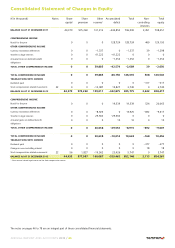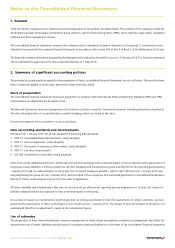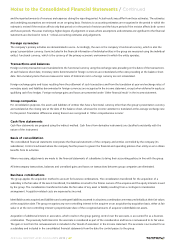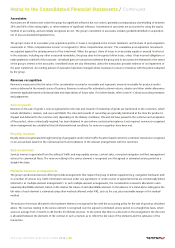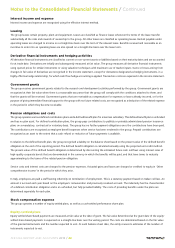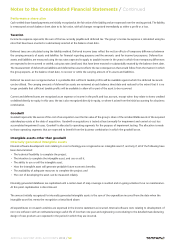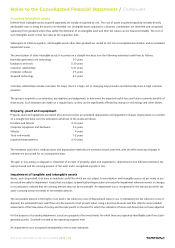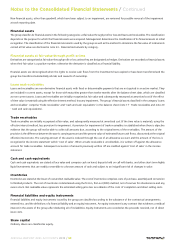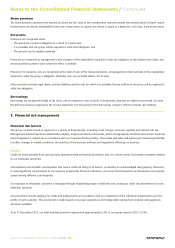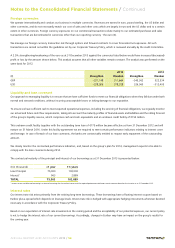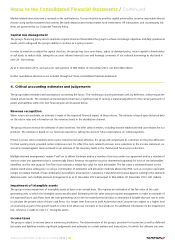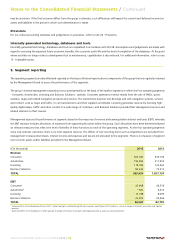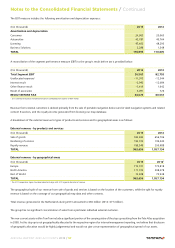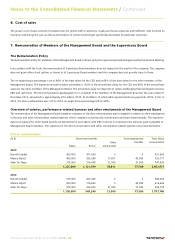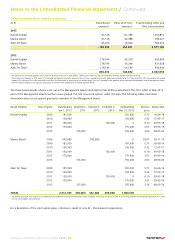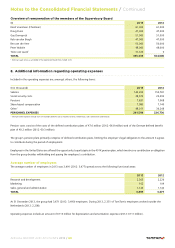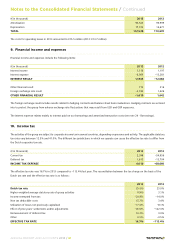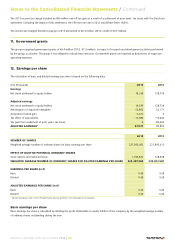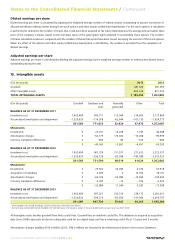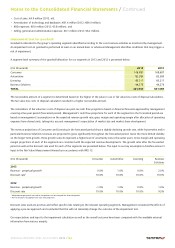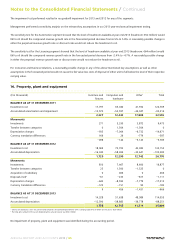TomTom 2013 Annual Report Download - page 55
Download and view the complete annual report
Please find page 55 of the 2013 TomTom annual report below. You can navigate through the pages in the report by either clicking on the pages listed below, or by using the keyword search tool below to find specific information within the annual report.
Market-related interest income is received on the cash balances. It is our intention to prioritise capital preservation to earn a reasonable interest
income using vanilla investment instruments like bank deposits and money market fund investments. All transactions and counterparty risk
limits are governed by our Corporate Treasury Policy.
Capital risk management
The group's financing policy aims to maintain a capital structure that enables the group to achieve its strategic objectives and daily operational
needs, and to safeguard the group's ability to continue as a going concern.
In order to maintain or adjust the capital structure, the group may issue new shares, adjust its dividend policy, return capital to shareholders
or sell assets to reduce debt, taking into account relevant interest cover and leverage covenants of our external borrowings as disclosed in
note 24 - Borrowings.
As at 31 December 2013, we had a net cash position of €83 million (31 December 2012: net debt €86 million).
Further quantitative disclosures are included throughout these consolidated financial statements.
4. Critical accounting estimates and judgements
The group makes estimates and assumptions concerning the future. The resulting accounting estimates will, by definition, seldom equal the
related actual results. The estimates and assumptions that have a significant risk of causing a material adjustment to the carrying amounts of
assets and liabilities within the next financial year are discussed below.
Revenue recognition
When returns are probable, an estimate is made of the expected financial impact of these returns. The estimate is based upon historical data
on the return rates and information on the inventory levels in the distribution channel.
The group reduces revenue for estimates of sales incentives. We offer sales incentives, including channel rebates and end-user rebates for our
products. The estimate is based on our historical experience, taking into account future expectations on rebate payments.
If there is excess stock at retailers when a price reduction becomes effective, the group will compensate its customers on the price difference
for their existing stock, provided certain criteria are met. To reflect the costs related to known price reductions in the income statement, an
accrual is created against revenue based on an estimate of the inventory levels in the channel and future price reductions.
Multiple-element arrangements require TomTom to deliver hardware and/or a number of services under one agreement and/or a number of
services under one agreement that is commercially linked. Revenue recognition must be determined separately for each of the deliverables
identified, and for that purpose TomTom must estimate a reliable fair value for each deliverable. The fair value is estimated based on the
relative stand-alone selling price or using a combination of estimation and allocation methods allowed by IFRS, such as cost plus reasonable
margin or residual method, if that combination best reflects a transaction's substance. Total deferred revenue balance relating to the elements
deferred under such multiple element arrangements as at 31 December 2013 amounted to €63 million (31 December 2012: €41 million).
Impairment of intangible assets
The group reviews impairment of intangible assets at least on an annual basis. This requires an estimation of the fair value of the cash-
generating units to which the intangible assets are allocated. Estimating the fair value amount requires management to make an estimate of
the expected future cash flows from the cash-generating unit in the forecasted period and also to determine a suitable discount rate in order
to calculate the present value of those cash flows. Our longer term forecasts in both Automotive and Consumer are subject to a higher level
of uncertainty as part of the growth needs to come from either new contracts or new products. For additional information on the impairment
test, reference is made to note 13 - Intangible assets.
Income taxes
The group is subject to income taxes in numerous jurisdictions. The determination of the group's provision for income tax as well as deferred
tax assets and liabilities involves significant judgements and estimates on certain matters and transactions, for which the ultimate outcome
Notes to the Consolidated Financial Statements / Continued
ANNUAL REPORT AND ACCOUNTS 2013 / 55


